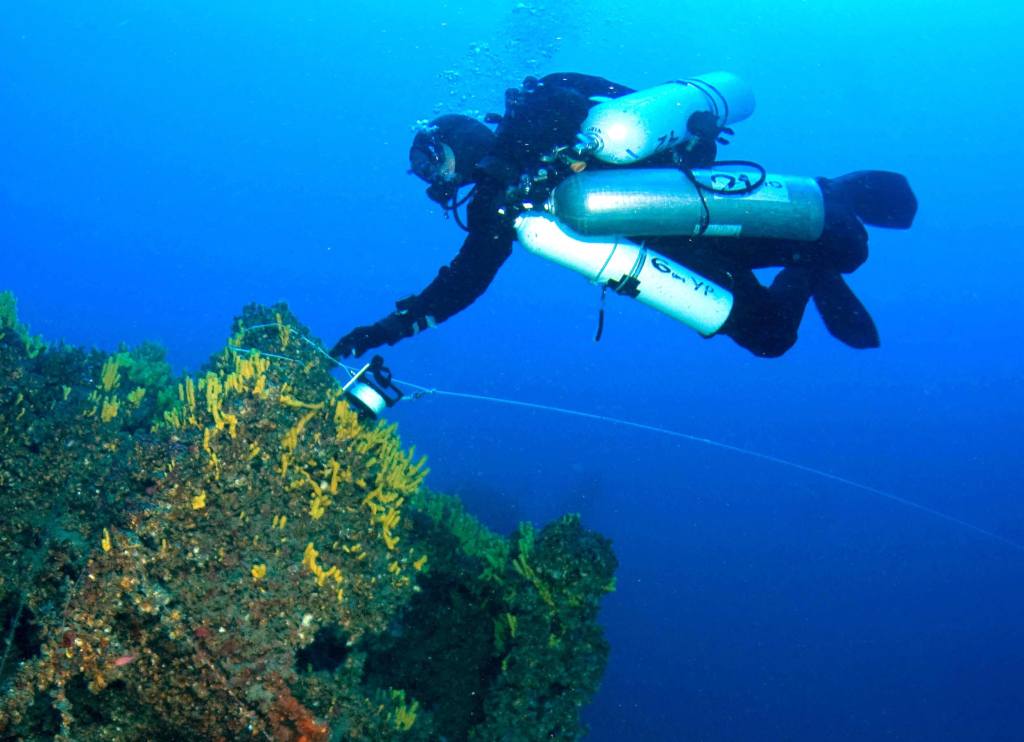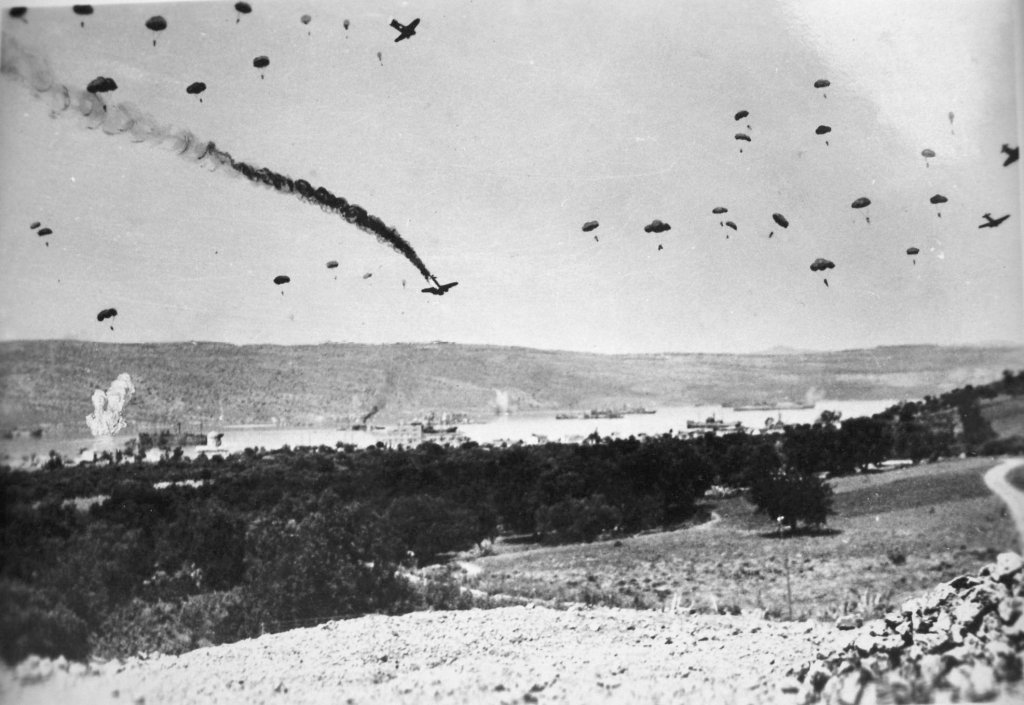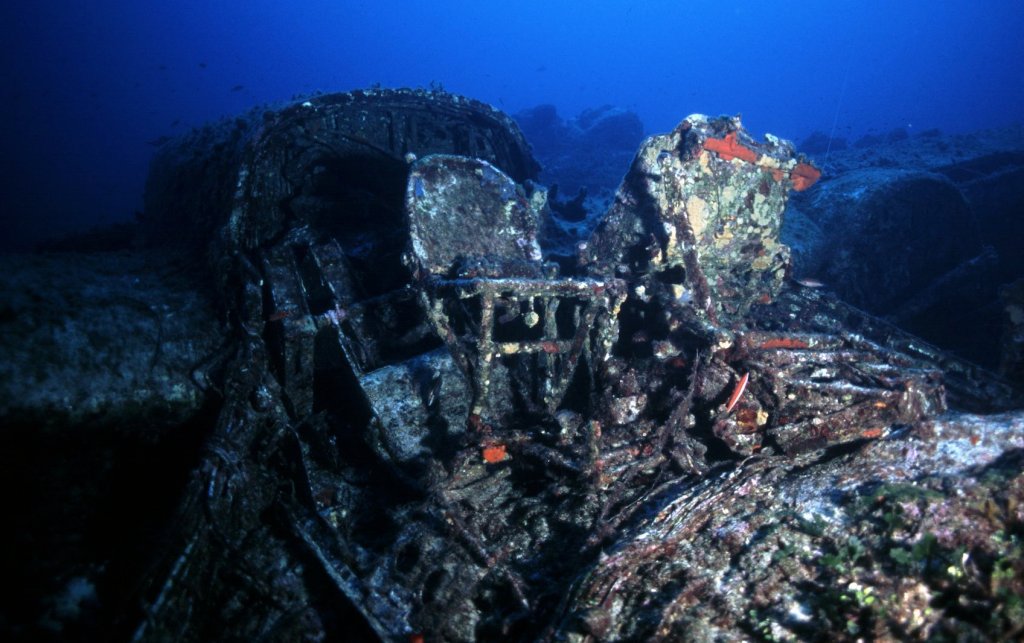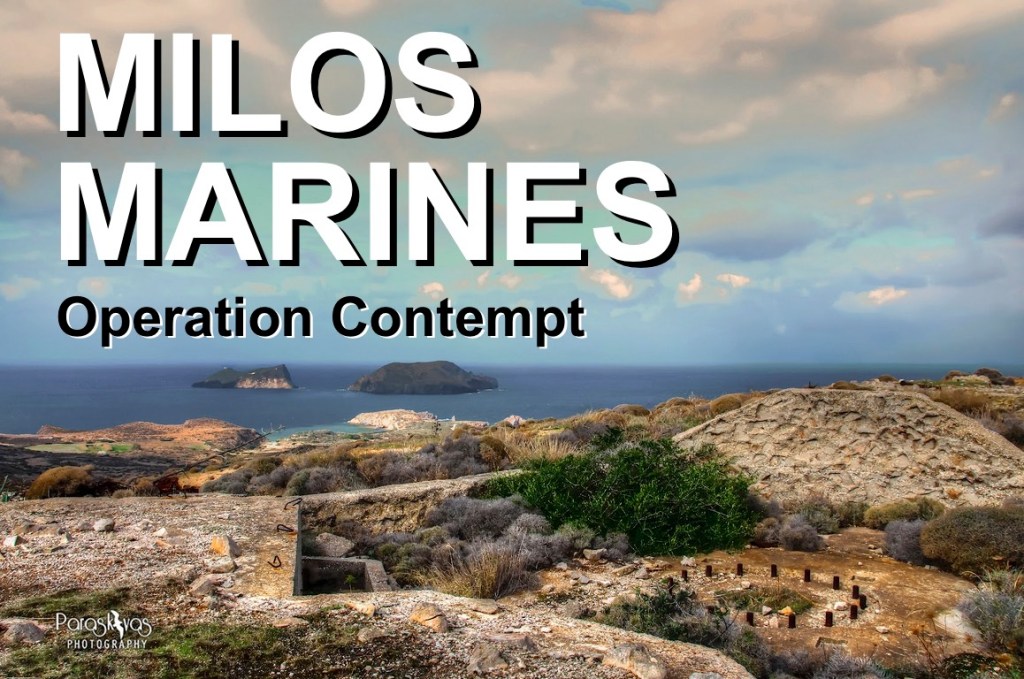This article was originally published in the Australian newspaper Neos Kosmos (Ethnic Publications Pty Ltd) 11 April 2020.
Ross J. Robertson investigates the efforts being made to bring the cultural significance of Greek WWII shipwrecks to light.
Although exact numbers are notoriously hard to verify, it is estimated that there are at least 2,000 shipwrecks in Greek waters. Of these, more than 1,000 ships were sunk during the ravages of WWII. It is thought that as many as 12% – that is 120 ships and an unknown number of their crews – were lost in the wider Pagasitikos Gulf, Northern Euboean and Pelion area on the central eastern coast of mainland Greece. Aerial strafing and bombing, submarine torpedo salvos, naval gun action, shipping mines, even deliberate scuttling are all causes of their demise. The underlying reason for such a significant concentration is that the passage between the eastern Greek coast and elongated island of Euboea has always served as major shipping route from Athens (i.e. Piraeus) to Thessaloniki. It is also the more sheltered route many mariners take on their way north through the Aegean to the Bosphorus and the Black Sea and vice versa.
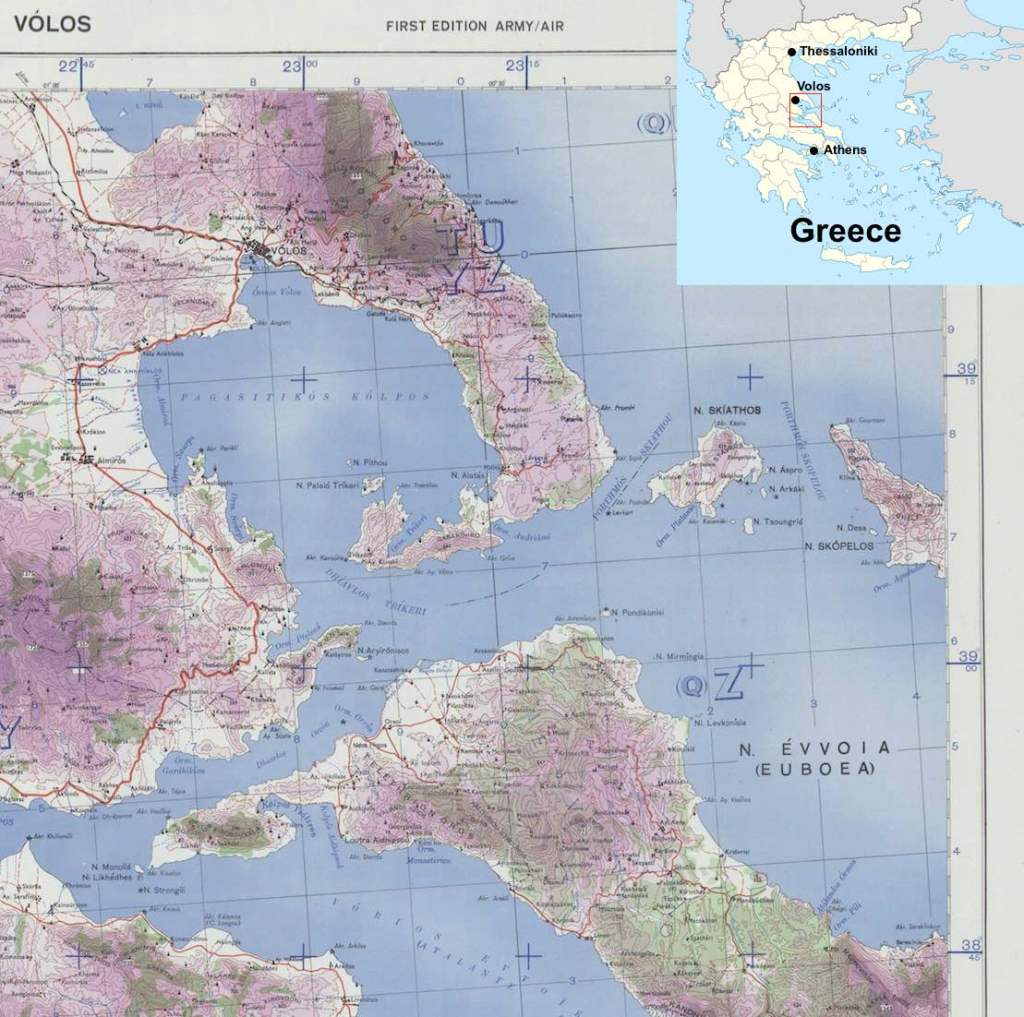
The importance of the area in modern maritime history has not been lost on Dr Kimon Papadimitriou of the Aristotle University of Thessaloniki and fellow members of the Underwater Survey Team (UST). Their efforts, which include academic papers and presentations on the lecture circuit, are directed towards the promotion of thematic underwater tours of 20th century shipwrecks, particularly those from WWII. It is no small task, given that many sites remain undocumented or unverified, while others are inaccessible to divers by law because they are in declared archeological no-go areas.
Fortunately, times are changing. As part of the European Union’s BlueMed programme, the Ephorate of Underwater Antiquities division of the Greek Ministry of Culture has an initiative to promote marine tourism by making specific underwater heritage sites open to the public.
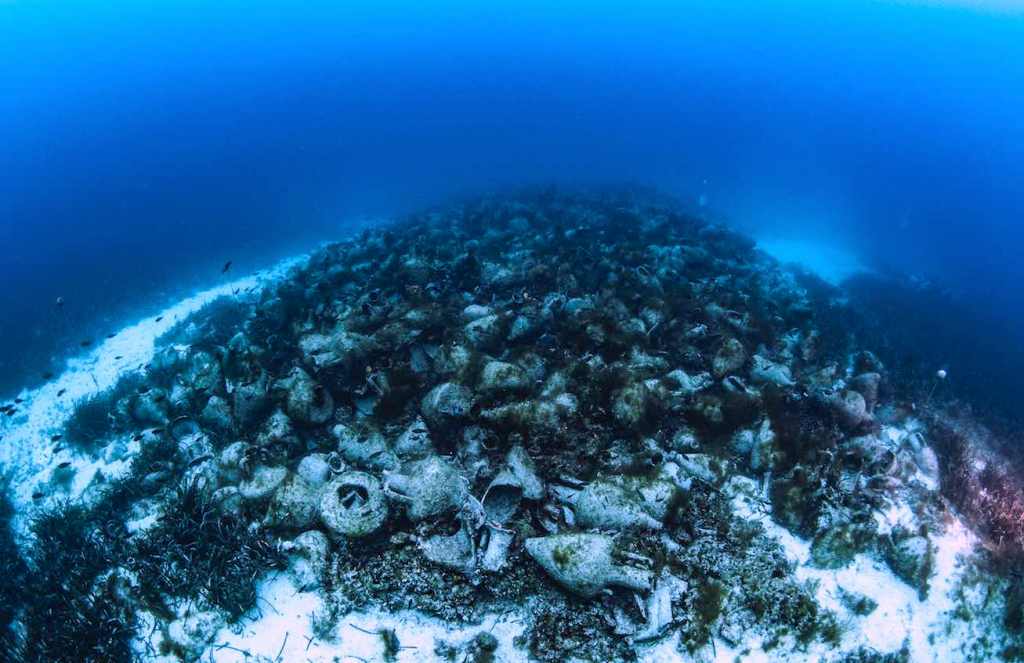
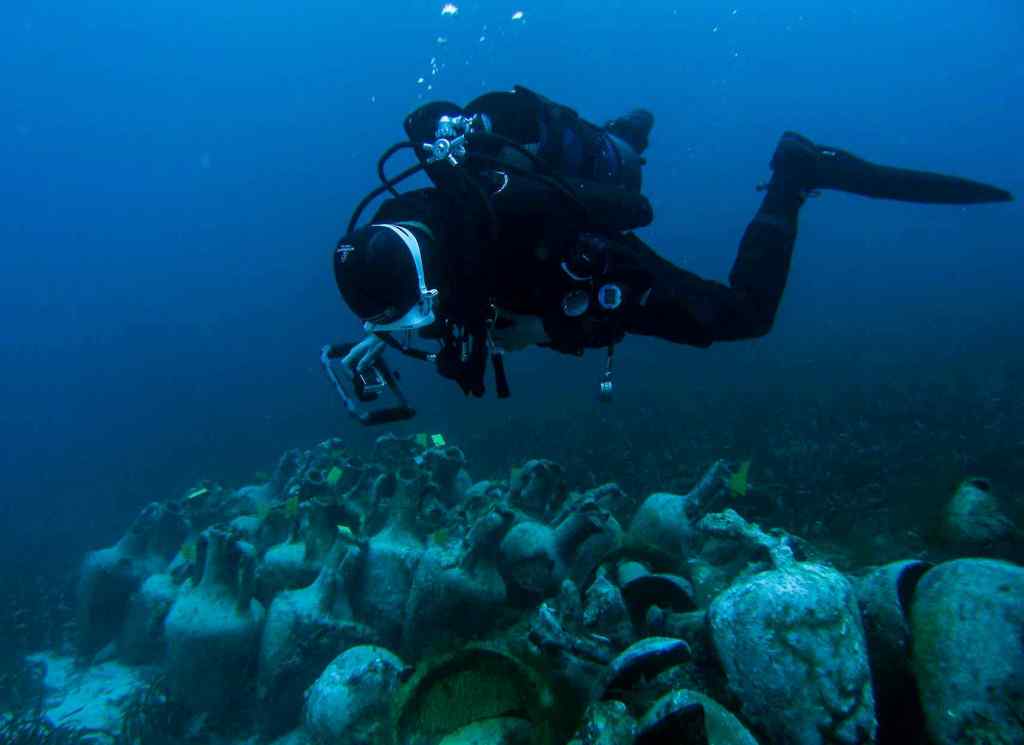
In July 2019, a series of trials were conducted for recreational SCUBA divers to gain first-hand experience of cultural assets such as the 2,400 year old Peristera shipwreck near the island of Alonissos, in addition to establishing virtual reality museums and information centres for the non-diving public. Although the proposal focuses on ships, settlements and harbour installations from antiquity, the wrecks of ships and aircraft which are over fifty years old are also considered to be monuments. As such, they provide immense value as tourist destinations.
Since 2022, recreational scuba diving has been officially sanctioned by the Greek government across 91 designated sites (see Delve Deeper for a full list). These sites reveal a diverse array of artefacts primarily from World War II, including shipwrecks, aircraft, submarines, and even a submerged truck. Depths vary, reaching up to 120 metres, but several relics are accessible to less experienced divers at modest depths of around 20 metres.
“Since 2022, recreational scuba diving has been officially sanctioned by the Greek government across
91 designated sites.”
Stringent regulations govern these historic locations, requiring interested divers to complete paperwork, and any form of disturbance or artefact collection is strictly prohibited. The preservation of these underwater treasures remains a paramount concern for both authorities and enthusiasts alike.
The change is in line with the UNESCO conservation agreement of Underwater Cultural Heritage, as drawn up by the United Nations and signed by member states in 2001. Its mandate includes the in situ preservation and non-commercialisation of submerged locations and artefacts of cultural interest. Importantly, it also advocates the sharing of relevant education about such sites.
“Shipwrecks of all sizes and circumstances are a special embodiment of history,”
Dr Kimon Papadimitriou
Dr Papadimitriou wholeheartedly agrees with these new developments. “The seabed is a natural preserve of historical memory. Shipwrecks of all sizes and circumstances are a special embodiment of that history. We and future generations can learn a lot from them – which is precisely why the public needs to be allowed access,” he said.
A prerequisite for a restricted site being made accessible is for it to be studied, substantiated and surveyed. Kimon and the UST team are facing these formidable challenges head-on. They are in the process of mapping the exact location of known wrecks in the Pagasitikos-Euboean-Pelion region. Historical details and site particulars are also being sought. Although considerable inroads have been made, there remain plenty of unidentified wrecks.
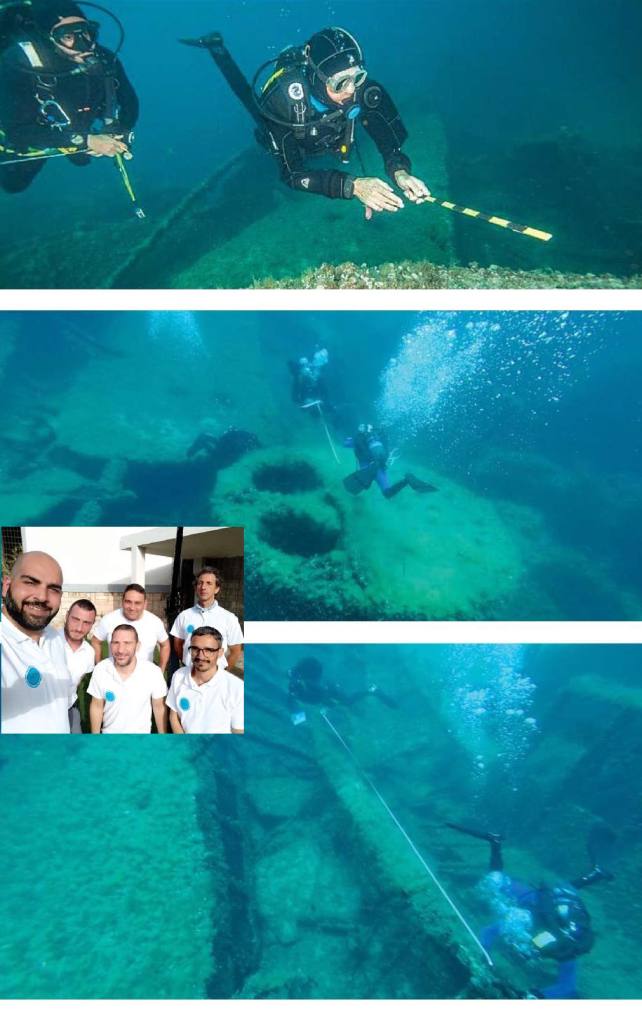
The UST team also actively searches for previously undiscovered wrecks. “Actually diving a potential shipwreck site is always an adventure in itself, but the real journey begins months, sometimes years earlier in the historical archives,” Dr Papadimitriou explained.
Investigation usually goes one of two ways. Either a wreck is located and then the long search for its identity begins, or the records indicate the name of a missing vessel and a physical search in the most likely area is undertaken. In both cases, any breakthrough is almost always the result of meticulous archival research requiring a deep understanding of historical context. But as Dr Papadimitriou readily admits; “Even in a hi-tech world of computer databases, magnetometers and side scan sonars, a chat with a local SCUBA diver or an elderly local fisherman who appreciates a glass of chilled tsipouro is often far more productive.”
The stories wrecks tell
Dr Papadimitriou’s interest in the region was in no small part because of Paris Sofos. “Paris used to operate a popular dive centre in the area and soon became heavily involved in trying to identify the local wrecks. So, it could be said that he dragged me down with him!” he laughs. “By the time legendary shipwreck hunter, Dimitri Galon published ‘Shipwrecks of Southern Pelion’ in 2012, I was well and truly hooked… and have been ever since.”
Mr Galon’s research revealed that during the German’s desperate evacuation of Greece in October 1944, the Kriegsmarine minesweepers GA-73 and GA-76 (formally R-14 and R-159 of the Italian Navy) were being used to escort convoys transporting Wehrmacht troops and equipment as they fled from Greek islands to the mainland. While on route from the island of Skopelos in the Sporades, they were attacked on the 18th of October 1944 by allied planes. Both were sunk just outside the Pagasitikos Gulf, near Argyronisi – a small uninhabited island whose only remarkable feature is a solitary lighthouse built in 1899.
Poring over the archives, he found the following reference in the Maritime Diary of the German Admiralty of the Aegean; “GA-73 reports an air attack against GA-76 and itself outside Volos, near the island of Argyronisos. The ships were sunk. The codes were destroyed. There were about 40 survivors from the naval command of Skopelos. Together with crews, there are a total of 80 survivors.”
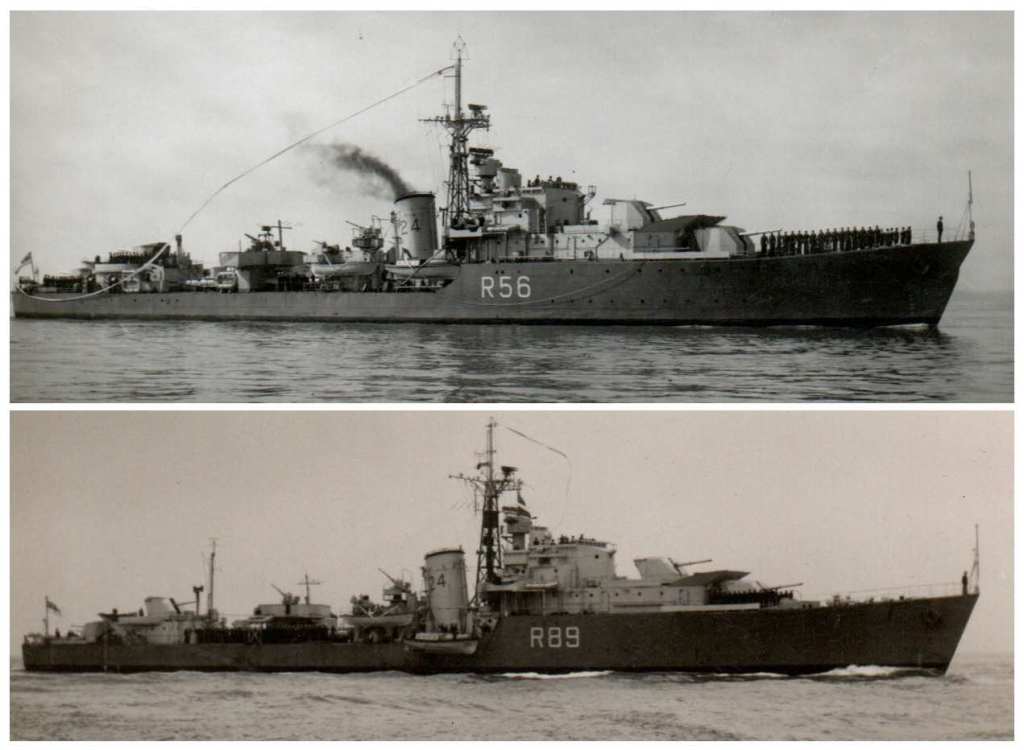
Despite the mayhem of their hurried withdrawal from Greece, several attempts to rescue the survivors were made by the Germans. This even included the last of the Kriegsmarine destroyers in the Aegean, the TA-18 (formerly the Italian Solferino). Commanded by Lieutenant Günther-Werner Schmidt, it was making its way to Argyronisos on 19 October when it encountered a pair of Royal Navy T-class destroyers, HMS Termagant and Tuscan. In the last significant Aegean naval engagement of the war, the TA-18 was sunk on the Pelion peninsula (see the ww2stories.org article here), not too far away from the now popular tourist destination, the island of Skiathos.
By 24 October, those stranded on Argyronisos remained forsaken. With time running out and the Germans in full rout, the Admiralty was forced to send a message pleading clemency directly to their adversaries, the British Naval Administration: “On the island of Argyronisos (39°00′30″N 23°04′12″E), there are about 100 German shipwreck survivors who are at serious risk of starvation. Please arrange for their immediate rescue.”
Exploring an unknown wreck
Such revelations invariably lead to more questions. Which aircraft were involved in the attack? The RAF, SAAF, USAF, and the aircraft carrier borne British Air Fleet Arm were all operating in the theatre at the time. Where are the wrecks of GA-73 and GA-76? What was the eventual fate of all those marooned on the small and otherwise insignificant island of Argyronisos?
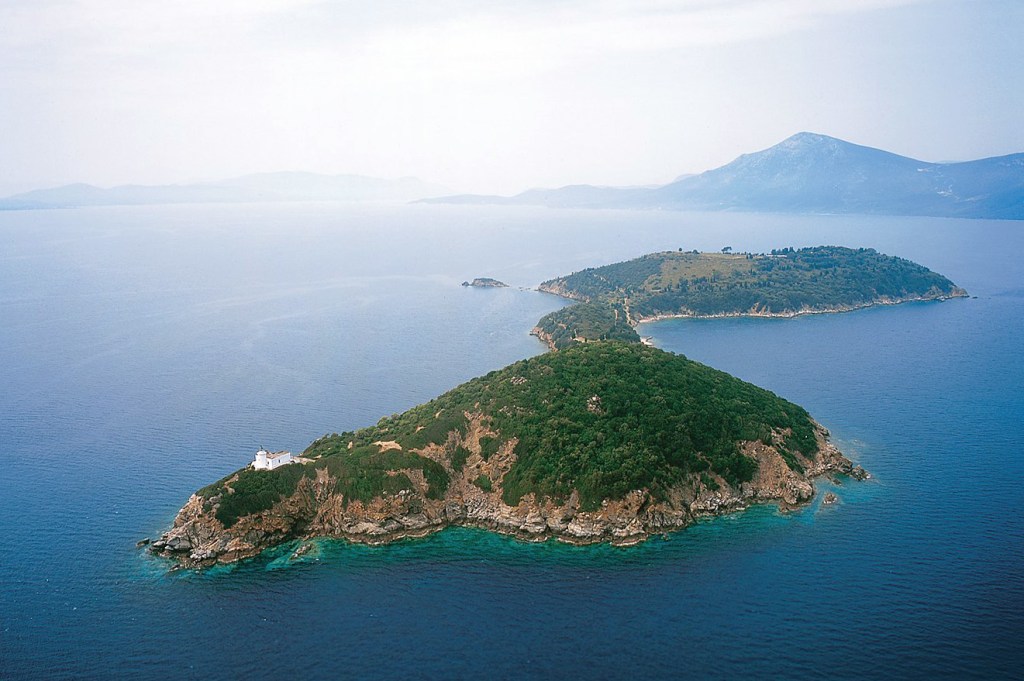
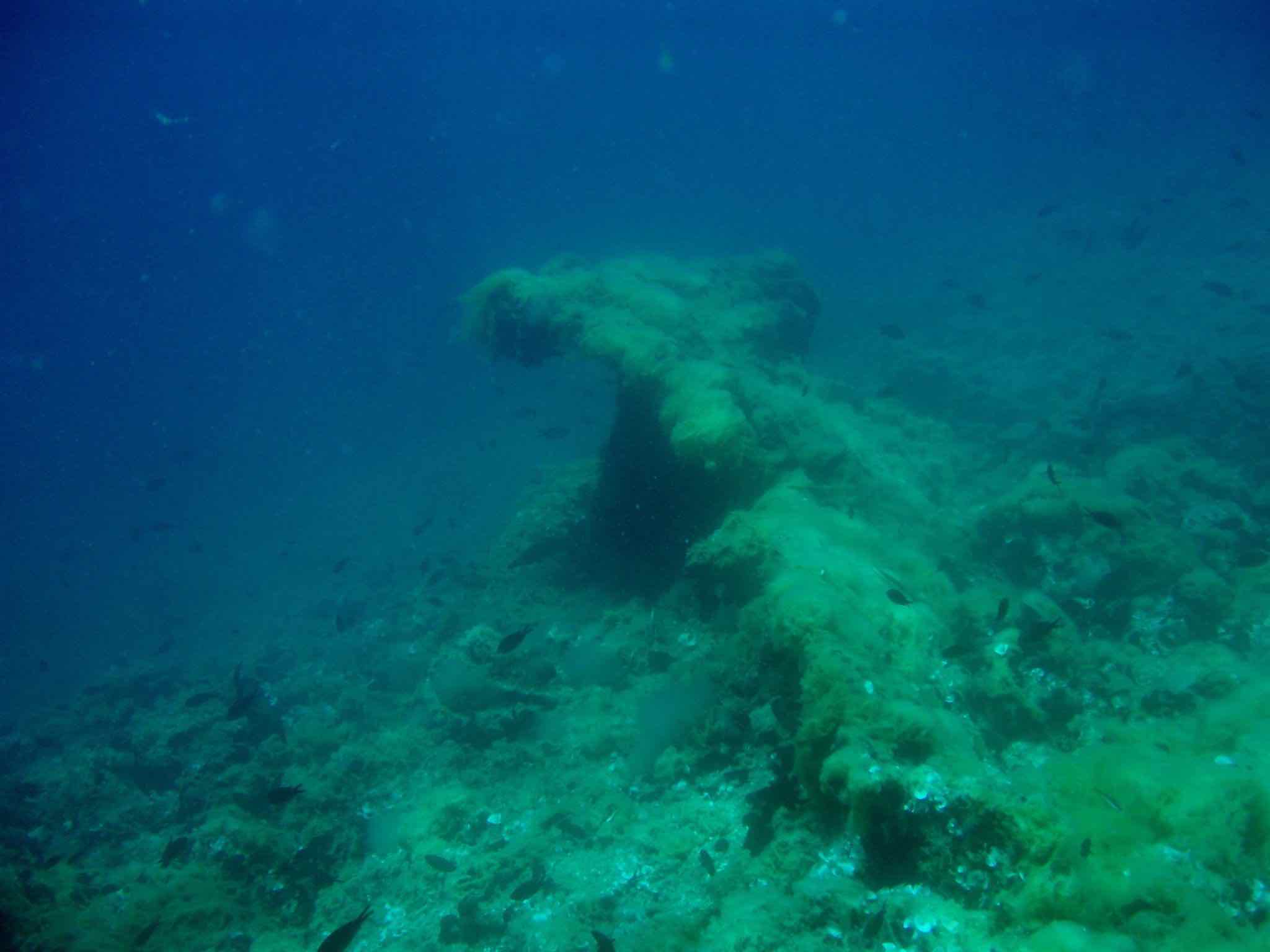


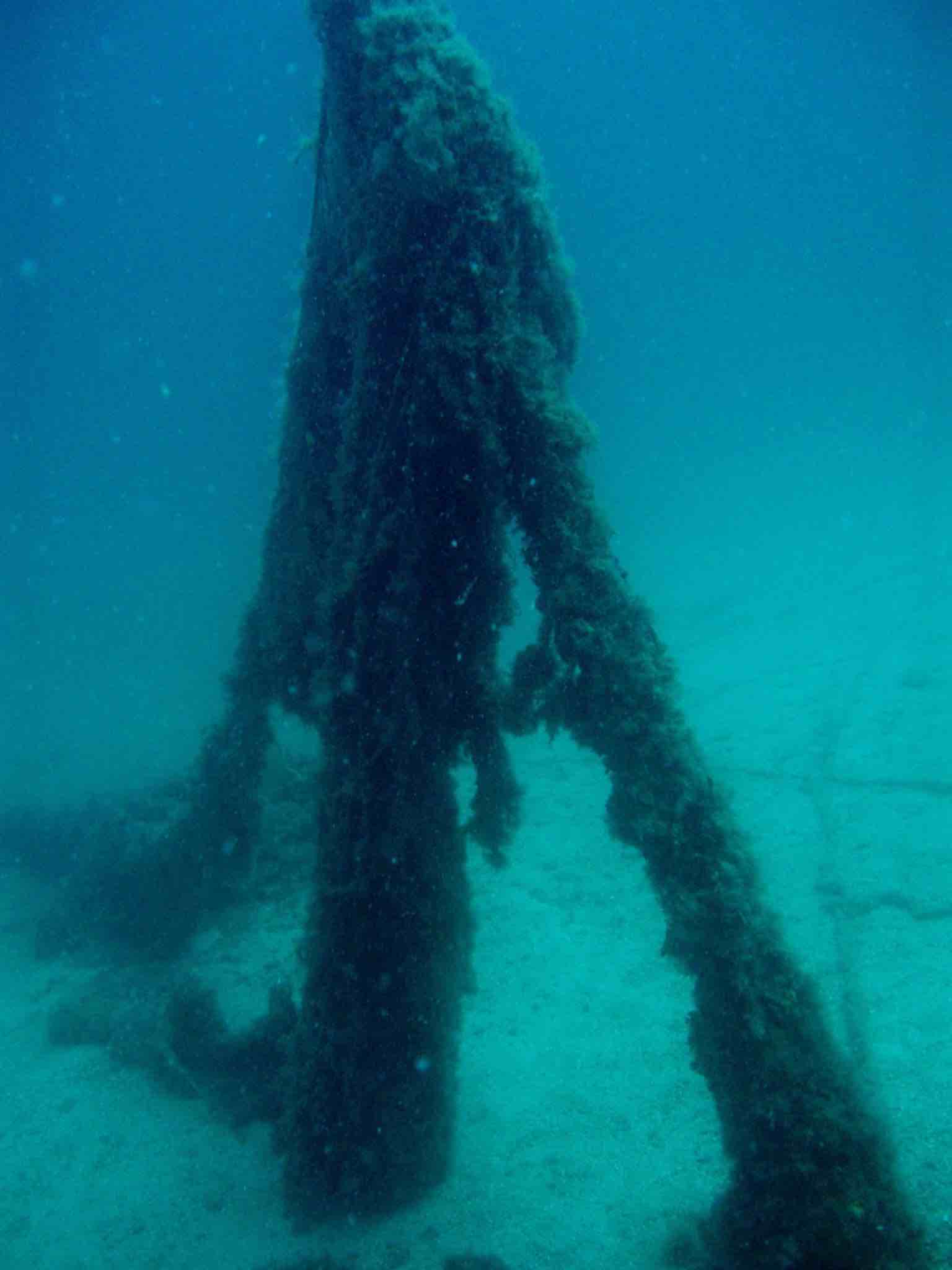
“World War II wrecks are particularly challenging,” fellow member of the UST team, Nikolaos Sidiropoulos explained. “Unlike wrecks from the First World War, most became post-war victims of the government-run ‘Organisation of Wreck Removal’. Consequently, they were auctioned off to contractors who either salvaged and resold them, or dismantled them for parts and metal. As incomplete records were kept and backroom-deals became part of the mix, it makes confirming the fate of such wrecks very difficult.”
It turns out that GA-73 and GA-76 also fell prey to the scavengers. Both were indiscriminately carved up by acetylene torch and sold for scrap. With most of the physical evidence removed, the entire incident was more or less forgotten.
The rediscovery of such events has since become the province of people like Mr Galon and Dr Papadimitriou. Theirs is voluntary and unfunded work, done in the spirit of adventure, public interest and the promotion of history. The UST team in particular elicits the cooperation of local dive centres and wreck enthusiasts. “It’s a shared experience, as well it should be,” Dr Papadimitriou said. “After all, it is our collective cultural heritage that we are trying to uncover… and by doing so, we learn a whole lot more about ourselves.”
Some eighty years after their sinking, the scant remains of both GA-73 and GA-76 still exist just off the shoreline of Argyronisi, at a depth of a mere nine metres. Their discovery confirms the story. It also underpins an inescapable truth – without historical context and the human drama that invariably accompanies it, shipwrecks would just be hunks of corroding metal lying at the bottom of the sea. In other words, they would have absolutely no meaning. Fortunately, there are people who have curiosity enough to make it otherwise.
You can learn more about UST from their wreckhistory.com website (in Greek and English) here. Cover photo (diver over U-133) courtesy of Dimitri Galon.
Delve Deeper
Your chance to learn more about the shipwrecks in Greek waters officially open to recreational divers by region. Most are WWII artefacts.
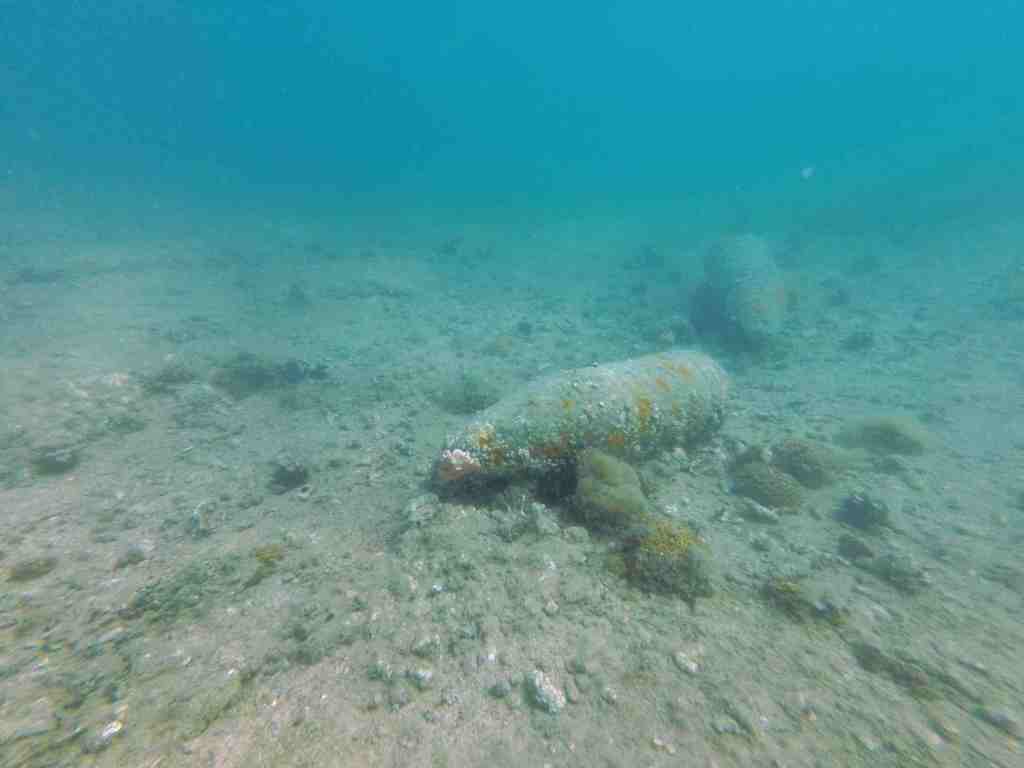
Attica Region
1. Greek passenger steamship PATRIS.
Sank due to an accident on June 15, 1927, near the island of Patroklos in the Saronic Gulf. Maximum depth 72 metres.
2. British cable ship RETRIEVER.
Sank from German air raids in April 1941, near the Hellenikon airport. Maximum depth 54 metres.
3. British cargo steamship CLAN CUMMING.
Sank from hitting a mine in April 1941, east of Aegina. Maximum depth 90 metres.
4. Italian minelayer RD 7
Sank from hitting a mine on June 15, 1942, southwest of Aegina. Maximum depth 100 metres. Warship.
5. Italian cargo steamship MONROSA.
Sank on October 25, 1941, off Anavyssos, by a British submarine. Maximum depth 92 metres.
6. Greek cargo steamship PETALLOI.
Sank from German air raids on April 6, 1941, northeast of Aegina. Maximum depth 76 metres.
7. Italian torpedo boat ALDEBARAN.
Sank from hitting a British mine on October 20, 1941, near the island of San Giorgio. Maximum depth 102 metres. Warship.
8. German landing craft LOKFÄHRE.
Sank from allied fire near the island of Arsida on October 10, 1944. Maximum depth 108 metres. Warship.
9. Italian destroyer CURTATONE.
Sank from hitting a mine near Fleves on May 20, 1941. Maximum depth 96 metres. Warship.
10. Greek destroyer HYDRA.
Sank near Lagousa Island (Aegina) on April 22, 1941. Maximum depth 54 metres. Warship.
11. Greek steamship ROZA VLASI.
Sank due to cargo shift south of Sounio on December 24, 1959. Maximum depth 60 metres.
12. Greek tugboat MIMIS.
Sank from hitting a mine east of Aegina on March 29, 1941. Maximum depth 80 metres.
13. AGIOS MARKOS, Salamis.
Sank on April 21, 1941, at Kakia Vrygla, Salamis. Maximum depth 45 metres.
14. Italian torpedo boat ALTAIR.
Sank from hitting a British mine on October 20, 1941, near the island of Patroklos. Maximum depth 130 metres. Warship.
15. Italian aircraft Savoia-Marchetti SM 79 ‘Sparviero’.
Ditched due to fuel shortage on August 5, 1944, near Poros. Maximum depth 60 metres. Warplane.
16. German submarine U-133. (see ww2stories.org article here)
Sank from hitting a mine on March 14, 1942, east of Aegina. Maximum depth 74 metres. War submarine.
Shipwrecks in the South Aegean Region:
17. Oceanic British ship (HMS Britannic)
One of two sister ships of the HMS Titanic. Sank on November 21, 1916, by hitting a mine outside the port of Kea. Maximum depth 130 metres.
18. Oceanic S/S Burdigala
Sank on November 14, 1916, approximately two nautical miles southwest of Cape Agios Nikolaos in Kea, by hitting a mine. Maximum depth 73 metres.
19. Steamship PATRIS
Sank on February 23, 1868, after hitting a reef in Koundouros, Kea. Maximum depth 55 metres.
20. Destroyer ‘VASILISSA OLGAS’
Sank on September 26, 1943, in Lakki, Leros, after an air raid by the Luftwaffe. Maximum depth 40 metres. Warship.
21. Passenger ship PANORMITIS, Telendos
Sank on January 26, 1966, travelling from Leros to Kalymnos, due to fire and collision with the coast rocks. Maximum depth 40 metres.
22. Cargo ship north of Cape Corai, Leros.
Sank in September 1943, by a German aircraft torpedo in Partheni Bay, north of Leros. Maximum depth 43 metres.
23. American landing craft in Lakki, Leros
Identification details and sinking conditions are unknown. It is of American origin, likely part of Truman’s post-war aid to Greece. It is located at a depth of 40 metres. Warship.
24. Leros, German landing craft type.
Sank on November 12, 1943, in the northeast of the islet of Stroggyli in Leros, following cannon fire. Maximum depth 20 metres. Warship.
25. Greek cargo steamship ARTEMIS PITA.
Ordered by the German occupying army, sank from Allied aircraft on February 21, 1943, in Adamantas, Milos. Maximum depth 45 metres.
26. Spanish cargo steamship SAN EDUARDO.
Sank by British aircraft on May 9, 1943, southwest of Serifos. Maximum depth 52 metres.
27. Italian cargo steamship CITTA DI TRIPOLI.
Sank by the British submarine HMS TORBAY on July 2, 1941, northwest of Kea. Maximum depth 120 metres.
28. French passenger ship THEOPHILE GAUTIER.
Sank from the British submarine HMS TALISMAN on June 11, 1941, north of Kea. Maximum depth 110 metres.
29. Greek cargo steamship SIFNOS.
Sank by the German air force in April 1941, north of Milos. Maximum depth 76 metres.
30. Belgian cargo ship PORTUGAL.
Sank, due to a collision, on October 4, 1957, in the Tympiti Seamount (northwest of Makronissos). Maximum depth 35 metres.
31. Bristol Beaufighter, Paros
Shot down by German fire in the fall of 1943, southeast of Paros. Maximum depth 40 metres. Warplane.
32. British aircraft Vickers Wellington Mk XIII.
Shot down by German fire on November 7, 1943, east of Sifnos. Depth 72 metres. Warplane.
33. Bristol Beaufighter, Naxos.
The plane was shot down in November 1943, following an air battle with two German Arado 196. It sank half a mile off Kouropas Cape, on the west coast of Naxos. Depth 34 metres. Warplane.
34. Junkers 52, Leros
Crashed after Allied fire on November 13, 1943, in Ano Symi, Leros. Maximum depth 51 metres. Warplane.
35. Junkers 52, Kea
Sank in September 1943, off Kea. Maximum depth 63 metres. Warplane.
36. Arado Ar 196, Leros
Located east of Cape Mavros Cavos at a depth of 20 metres, dragged to the location by fishing nets. Warplane.
37. Heinkel 111, Leros
Located sunken northwest of Blefouti Bay at a depth of 16 metres. Dragged to the location by fishing nets. Warplane.
38. Italian freighter, Lakki, Leros
Italian loading barge with metal anti-submarine netting for port protection. Sank in September or October 1943. Maximum depth 41 metres.
39. German aircraft Arado 196, Herakleia
Shot down during World War II. Located in the Alimnia Bay of Herakleia, at a depth of 11 metres.
40. Unknown wreck in Palaia Kammeni, Santorini
A vessel, 30 metres in length, reportedly sank during World War II. Depth 15 metres.
Region of Northern Aegean
41. Bulgarian steamship BALKAN.
Sank by the British submarine HMS SPORTSMAN on December 23, 1943, south of Mudros in Lemnos. Maximum depth 100 metres.
42. British passenger ship PRINCESS ALBERTA.
Sank due to a collision with a German mine in January 1918, south of Lemnos. Maximum depth 102 metres.
43. Greek passenger steamship ALEXANDROUPOLIS.
Sank due to an accident on November 30, 1948, near Cape Tigani in Lemnos. Maximum depth 58 metres.
44. Martin Baltimore, Ikaria
Crashed and sank due to mechanical failure on April 20, 1945, off the village of Manganitis, Ikaria. Maximum depth 18 metres. Warplane.
Region of Crete
45. Greek freight steamship KYRIAKI.
Sunk by the German air force on April 24, 1941, in Souda, Crete. Maximum depth 85 metres.
46. Beaufighter, Siteia.
Maximum depth 35 metres. Warplane.
47. Arado Ar 196.
Shot down by Allied aircraft near Chania (Crete) on August 3, 1943. Maximum depth 74 metres. Military aircraft.
48. Australian Landing Craft A6 or A20, Balos
Sank during the Battle of Crete on May 20, 1941. Depth 12 metres.
49. Italian supply ship PIERRE LUIGI, Souda
Sank by British planes during the Battle of Crete on May 20, 1941. Depth 33 metres.
50. German military aircraft in Gerani, Chania
Shot down during the Battle of Crete on May 20, 1941. Depth 8 metres.
51. Steamship MINNEWASKA, Marathi Soudas
Sank after hitting a mine on November 26, 1916.
Region of Central Macedonia
52. British steamship HMS MARQUETTE.
Sunk by torpedo from the German submarine U-35 on October 23, 1915, in the Thermaic Gulf. Maximum depth 80 metres.
53. Wreck MYTILENE in Kypsa Bay, Kassandra.
54. Passenger ship ERMINE,
Sank on August 2, 1917, in the Strymonian Gulf. Maximum depth 63 metres.
55. Steam-driven sailing ship M/S ALEXANDROS, Poseidi Chalkidiki
Sank on May 24, 1960, off the coast of Chalkidiki, near Poseidi. Maximum depth 5 metres.
56. Turkish wreck in Kalamitsi Chalkidiki
Sank in the first two decades of the 20th century. Depth 5-18 metres.
57. British mine-laying ship (probably HMS BY GEORGE)
Sank in the Strymonian Gulf. Maximum depth 60 metres.
58. German Landing Craft Kriegsmarine F 898
Sank in the Strymonian Gulf. Maximum depth 47 metres.
59. German aircraft Junkers 52
Crashed in the Strymonian Gulf. Maximum depth 60 metres.
60. German aircraft Junkers 88 or Dornier 17
Crashed in the Strymonian Gulf. Maximum depth 55 metres.
61. British (Ocean Liner) SS NORSEMAN, Cape Touzla
Ran aground and sank in 1916 (partially salvaged). Depth 10-16 metres.
62. Confiscated Commercial cargo ship HELENA, Nea Mihaniona.
The hull and superstructure of the ship are preserved, at a depth of up to 37m.
Ionian Islands Region
63. Italian gunboat PELLEGRINO MATTEUCCI.
Sank near Cape Doukato of Lefkada, due to a mine hit on May 21, 1941. Maximum depth 95 metres. Warship.
64. Submarine Perseus, (HMS Perseus – N36), Kefalonia
Sank on December 6, 1941, after hitting an Italian mine, off the coast of Kefalonia. Maximum depth 52 metres. Warship.
65. Junkers Ju 88 in Corfu
Possibly sank due to damage on June 26, 1941, off Agios Stefanos NW Corfu. Maximum depth 26 metres. Warplane.
66. SARA, Othonoi
Sank on February 2, 1925. Maximum depth 35 metres.
67. SS ARDENA, Kefalonia
Passenger steamer sank in the strait of Argostoli on October 23, 1943, after hitting a mine. Maximum depth 32 metres.
68. Junkers Ju 88, Ithaca
Crashed on the NW tip of Ithaca near Cape Agios Ioannis. The event has not been identified by archival research but is dated between 1940-1944. It remains in three detached sections at depths of 21, 23, and 35 metres.
69. CARINTHIA V, Kefalonia
Yacht that sank in 1971 in the southern part of Kefalonia. Maximum depth 64 metres.
Western Greece Region
70. Greek freighter steamship VIVI.
Sank after hitting a mine on November 10, 1940, near Cape Papas in the Gulf of Patras. Depth 45 metres.
71. Greek freighter steamship DARMAS.
Bombed and sunk by the German air force on April 21, 1941, at Bozaitika in the Gulf of Patras. Maximum depth 45 metres.
72. British torpedo boat HMS CHAMOIS.
Sank in the Gulf of Patras two nautical miles north of Araxos on September 26, 1904, due to an accident during trials caused by the detachment of a blade from its propeller. Located at a depth of 54 metres. Warship.
73. German freighter steamship MARGEURITE.
Sank after hitting a mine on October 13, 1943, in the Gulf of Patras. Maximum depth 84 metres.
74. Dutch freighter steamship MARS.
Sank after hitting a mine on May 30, 1945, in the Gulf of Patras. Maximum depth 45 metres.
75. Greek freighter steamship CHRISTOFOROS.
Sank due to weather conditions on January 13, 1921, in the Gulf of Patras. Maximum depth 45 metres.
76. Greek minelayer NESTOS.
Sank in Psathopyrgo on April 23, 1941, by the German air force. Maximum depth 48 metres. Warship.
77. British minesweeper BYMS 2077.
Sank after hitting a mine on October 25, 1944, in the Gulf of Patras. Maximum depth 60 metres. Warship.
78. Norwegian freighter steamship SVEN JARL.
Sank after hitting a mine on January 17, 1948, near the mouth of the Evinos River. Maximum depth 42 metres.
Central Greece Region
79. Motorship KASSANDRA, Akio, Platourada
Sank on February 28, 1973, on the island of Platourada or Akio in the Southern Euboean Gulf after grounding in shallow waters. Maximum depth 28 metres.
80. French steamship PARANA.
Sank after being torpedoed by the German submarine UC-74 on August 24, 1917, near Cape Kafireas. Maximum depth 75 metres.
81. British steamship HELMSTEDT.
Sank on March 22, 1880, southeast of Mantili islet in Karystos. Maximum depth 70 metres.
82. Greek steamship KLEIO.
Sank on January 6, 1904, on the islet Dipsa, Southern Euboean Gulf, after hitting the coast.
83. Cement carrier PIONEER I, Lichades Euboea
Sank on July 8, 1944, near the island of Agios Georgios in Lichades Euboea. Maximum depth 10 metres.
84. Italian freighter steamship DELFIN.
Sank in the southern Euboean Gulf, torpedoed by the British submarine HMS TACU on December 14, 1942. Maximum depth 100 metres.
85. Cement carrier, SS CRETELAND, Agios Georgios Euboea
Freighter steamship (Greek flag) that sank in 1930. Depths range from 8 to 13 metres.
Peloponnese Region
86. Greek steamship ATHANASIOS.
Sank by the German air force in the Gulf of Plytra (Laconian Gulf) on April 26, 1941. Maximum depth 28 metres.
87. Unknown merchant ship, Protos Messinias
Sank in the shallows of the island Protos Messinias, in the Gulf of Vourias, in 1942. Maximum depth 5 metres.
Epirus Region
88. British minesweeper H.M.S. REGULUS (J 327).
Sank on January 12, 1945, after hitting a mine in Syvota. Maximum depth 63 metres. Warship.
Thessaly Region
89. Junkers 88, Psathoura Northern Sporades
Possibly sank on May 27, 1942, off Psathoura lighthouse. Maximum depth 32 metres. Warplane.
90. German steamship VOLOS.
Struck underwater formation Lefteris Reef (Magnesia) due to bad weather and preventable errors on February 21, 1931. Maximum depth 57 metres.
91. Slepi CHRISTOS, Pteleos Magnesia
Remains of a small truck that sank during WWII. Maximum depth 22 metres.
[Source: www.culture.gov.gr]
We value your opinion!
Your feedback is important to us. If you enjoyed this article and would like to see similar content, show your appreciation by clicking the ‘Claps’ icon below. Also, ensure you stay up-to-date with our latest articles by subscribing to our Newsletter. You’ll receive new posts directly to your email inbox. Thank you for your support!
‘History has to be shared to be appreciated’
Subscribe to our Mailing List. We’ll keep you in the loop.
